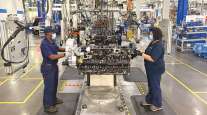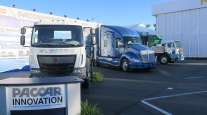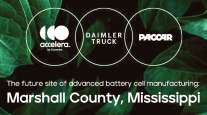Senior Reporter
Paccar Predicts Truck Market Stronger for Longer
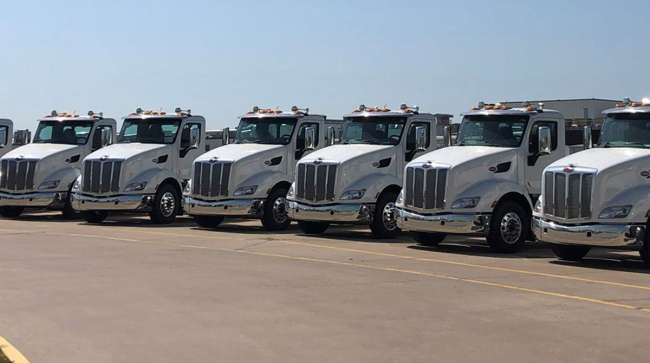
[Stay on top of transportation news: Get TTNews in your inbox.]
Truck maker Paccar Inc. sees the traditional peak-to-peak cycle in the U.S. truck market smoothing amid the industry’s already strong orders backlog that has fleets still waiting to gain slots for 2023 to replace aging trucks that they have to run longer than usual.
Then there is the massive federal infrastructure bill and its projects, the appeal of emerging zero-emission technologies to meet new regulations, plus a positive GDP outlook, Class 8 tonnage remaining strong, and truck utilization staying a few ticks above the historical norm of 90%.
Add in improvement underway in the supply chain, and these signs point to an extended period for new truck demand and production, company executives explained.

Feight
“The market will be stronger for longer,” Paccar CEO Preston Feight said during an online presentation June 1.
Paccar intends to capitalize on new diesel truck model sales — and more battery-electric and hydrogen-fueled trucks in production and being developed, and eventually autonomous ones. Its aftermarket parts businesses is expanding. Its financial services offerings will grow to include trucks as a service (TaaS), which will add turnkey revenue opportunities.
In 2021, Paccar’s truck segment accounted for 72% of its $23.5 billion in revenue, aftermarket parts 21%, and financial services 7%, according to the Bellevue, Wash.-based company, whose truck brands include Kenworth Truck Co., Peterbilt Motors Co. and, in Europe, DAF.
Paccar in 2021 notched 83 years of consecutive profitability as it achieved net income of $1.85 billion.
It has no manufacturing debt and ended 2021 with $3.4 billion in cash and cash equivalents. Over the past five years, here and abroad, it invested $4.2 billion in new truck and engine factories, a parts distribution center, a used truck center, plus several new medium- and heavy-duty truck models.
“We are excited about how the future looks,” Feight said.
The future Paccar sees also includes its connected trucks sharing more information with customers and among all facets of its business — it has 400,000 such trucks now. Clean diesel internal combustion engines will still power about 50% of its global truck sales in 2035, with the rest being zero-emission trucks.
Meanwhile, all other truck makers are planning, producing and moving in similar directions.
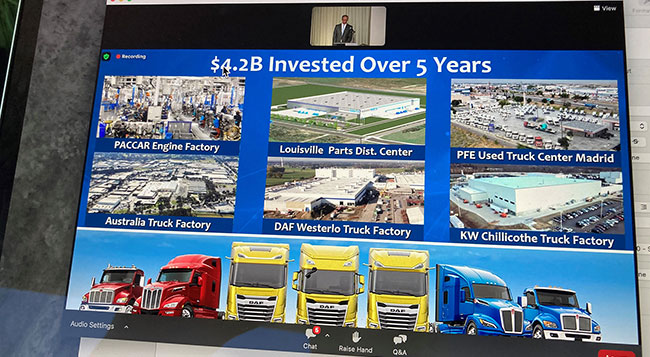
Slide from Paccar webinar.
But Paccar during the presentation claimed it had best-in-class operating efficiency (under 4%) for the past 10 years, when considering SG&A (selling, general and administrative expenses) as percent of revenue, compared with Volvo Trucks, Daimler Trucks, Traton Group and Iveco, a unit of CNH Industrial. Paccar noted it scored highest in net profit as a percent of revenue, 10%, compared with the others in the first quarter.
It reported it averaged the highest return on invested capital (about 20.4%) from 2017-2021 of all the truck makers, two leading Tier One suppliers and Cummins Inc., among other equipment manufacturers.
Paccar is forecasting for second quarter it will deliver 44,000-48,000 trucks globally compared with 43,000 in first quarter.
It forecast the total U.S.-Canada heavy-duty market in 2022 to be 260,000-290,000 trucks (compared with 250,000 in 2021), 270,000-300,000 in Europe and 125,000-135,000 in South America.
Feight said Paccar’s “medium-term” goal for market share was intentionally nebulous. “We didn’t say five years, but you could probably think in terms of five years, with plus or minuses.”
The company noted its U.S.-Canada Class 8 market share stands at about 29% and it is shooting for 32%.

Host Michael Freeze turns to Thomas Healy of Hyliion and Tom Lincoln of Dana to discuss how electric truck manufacturers are handling the future of equipment maintenance. Tune in above or by going to RoadSigns.TTNews.com.
Paccar spent “well over” a billion dollars on its new medium-duty, heavy-duty in North America flagships and new products in Europe, he said. “That is a tremendous advantage for us over the rest of the competitors we are dealing with,” in terms of driver acceptance and fuel efficiency. “That is a heck of a tailwind for us in growing market share.”
But that’s only one element in its plan to grow market share: the others are it parts business and the “stickiness” of how Paccar is connected with its customers, he said.
“That matters as the truck is increasingly complicated. [A customer’s] decision on ‘who’s going to care for me,’ and not just the initial purchase but: ‘Who’s going to take care of me and manage my fleet (TaaS)? Who is going to have the best e-commerce system so I can give the right part at the right spot when I need it, next day to keep the uptime?’ That’s another key element of our business growth.” But it’s not making a decision to go all-in now, he said, on emerging technologies like hydrogen fuel cells, or hydrogen internal combustion engines or NMC (a combination of nickel, manganese and cobalt) batteries.
Paccar is currently producing seven models of battery-electric Kenworth, Peterbilt and DAF trucks — and 11 charging options.
“It’s covering the field, right now, with appropriate investment levels,” Feight said, “so that as the market develops our customers trust us that we are not selling an answer that we presuppose; but we are meeting a need they have.”
Want more news? Listen to today's daily briefing below or go here for more info:


